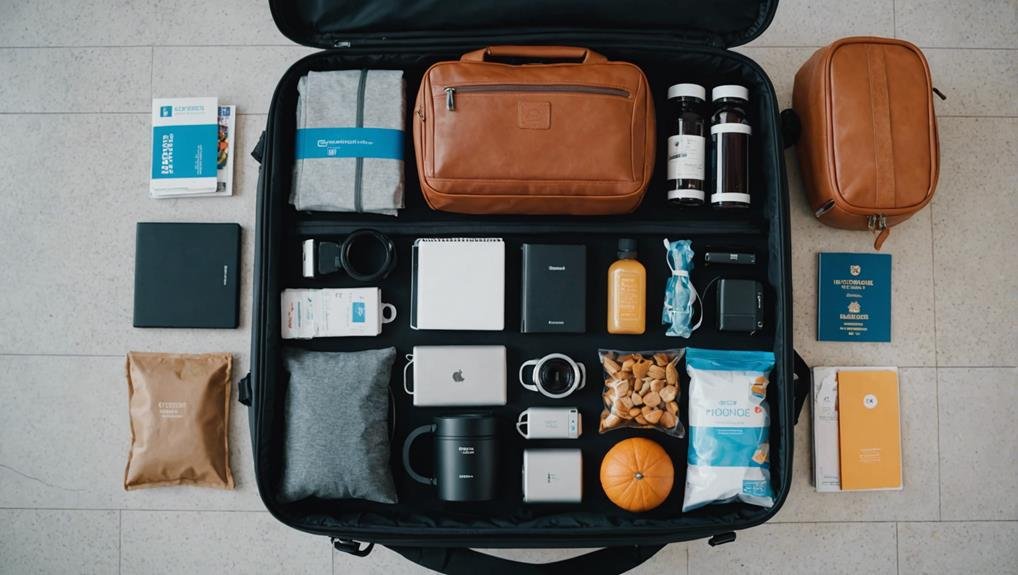Knowing how to pack your backpack can make all the difference when preparing for your next airline travel. Let’s start by selecting a spacious bag that fits airline size restrictions. You’ll need to balance the weight distribution and ensure your essentials are easily accessible, especially when moving through security checkpoints.
However, it’s not just about what you pack but how you pack it. From choosing what goes into your backpack to arranging it efficiently, every decision impacts your travel experience. Are you curious about how to keep your valuables safe and your clothes wrinkle-free? Let’s explore some effective strategies.
Key Takeaways
- Verify airline carry-on size limits to ensure your backpack meets requirements.
- Utilize packing cubes to organize and maximize space efficiently.
- Keep travel documents and necessary items in easily accessible pockets for security checks.
- Distribute weight evenly with heavier items near your back for comfort and balance.
- Protect fragile items by packing them in secure locations within your backpack.
Choose the Right Backpack
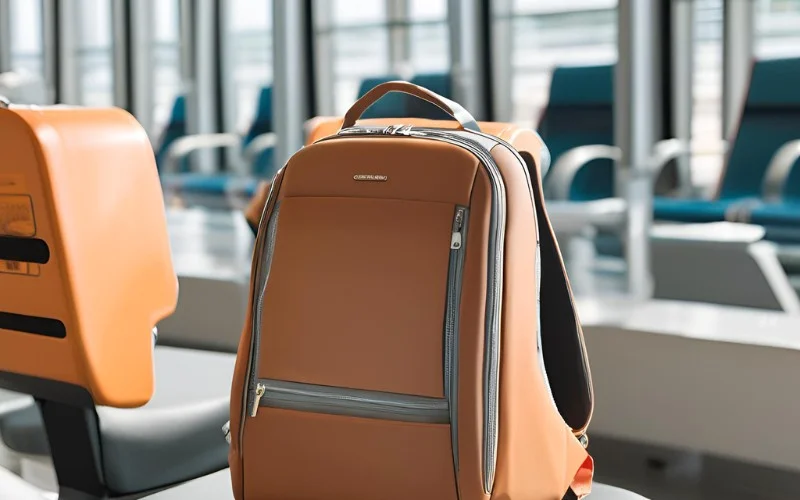
Choosing the perfect carry-on-sized backpack can greatly enhance your travel experience by ensuring easy access and ideal organization. When selecting a backpack, look for one with a clamshell opening. This design allows you to open the backpack flat like a suitcase, making it easier to access your belongings and utilize packing cubes efficiently.
Your backpack should have multiple main compartments for separating clothes from electronics and other essentials. A dedicated front pocket is ideal for quick access to items like your passport or boarding pass. Ensure there’s a specific spot where your water bottle goes, keeping it upright and within easy reach.
Focus on comfort and durability as well. Opt for a backpack made from lightweight, water-resistant materials such as durable nylon or polyester to withstand the rigors of travel. Padded shoulder straps and a supportive hip belt are essential for comfort, especially when carrying your backpack through vast airport terminals or down city streets.
Additionally, tuck-away shoulder straps can transform your backpack into a more streamlined shape, which is handy when stowing it in overhead bins or under the seat in front of you during your flight.
Maximize Space With Packing Cubes
Consider packing cubes to maximize your backpack’s space and keep everything organized. These modular organizers are perfect for categorizing and separating your clothes, toiletries, and accessories into neat compartments. With packing cubes, you can efficiently manage your items, making the most of every inch of your backpack.
This method maximizes space and keeps your backpack tidy throughout your airline trips. Packing cubes prevent your belongings from shifting while you’re on the move. This stability helps to reduce wrinkles in your clothes and keeps everything in its place, contributing to a hassle-free travel experience.
You’ll appreciate being able to pull out just the cube you need instead of rummaging through a disorganized backpack. This easy access saves time and effort, especially when you’re frequently on the go.
Adhere to Airline Size Limits
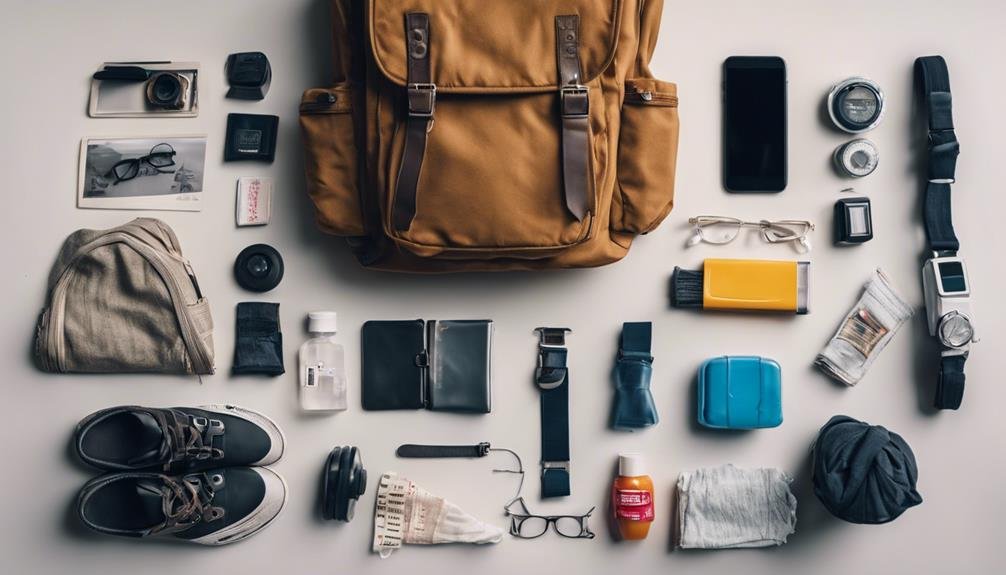
Always verify your airline’s carry-on size limits to guarantee your backpack meets its requirements and avoids extra fees. Most airlines’ carry-on sizes typically hover around 22 x 14 x 9 inches. Ensuring your travel backpack conforms to these dimensions can save you stress and money. Here are some practical tips for choosing and packing your backpack:
- Choose an Expandable Backpack: Look for a backpack that can expand to provide extra space but still compress to fit perfectly under the seat or in the overhead bin.
- Utilize Packing Cubes: These can help organize your items and maintain good weight distribution. Confirm that the cubes you choose fit within the main compartment without straining the zippers.
- Measure Including Front Pockets: When confirming your backpack’s size, include any front pockets and external components like wheels or handles that might add to the overall dimensions.
- Check the Laptop Compartment: If your backpack has a dedicated laptop compartment, ensure it doesn’t excessively contribute to the external dimensions when filled.
Following these guidelines will help ensure your travel goes as smoothly as possible, avoiding last-minute gate checks or additional fees.
Organize Items Strategically
After confirming that your backpack complies with airline size regulations, it’s important to pack your items strategically for balance and comfort. Start by placing heavier items closer to your back and toward the middle of the backpack. This method improves weight distribution, helping keep the backpack stable and comfortable.
It also prevents the backpack from feeling lopsided or straining your back during travels. When organizing items, think about how weight affects balance and comfort. Use packing cubes to separate and organize items efficiently. These handy tools allow you to pack similar items together and can be easily rearranged to better balance the load within your backpack.
Additionally, packing cubes help to utilize space more effectively, ensuring that every inch of your backpack is used efficiently. Be mindful not to overstuff one side of your backpack. Even distribution is key to maintaining stability and ease of carrying.
By applying these packing techniques, you’ll ensure that your backpack isn’t only well-organized and easy to handle through long airport corridors and bustling city streets. Remember, strategic packing is essential for a hassle-free travel experience.
Keep Valuables Secure and Accessible
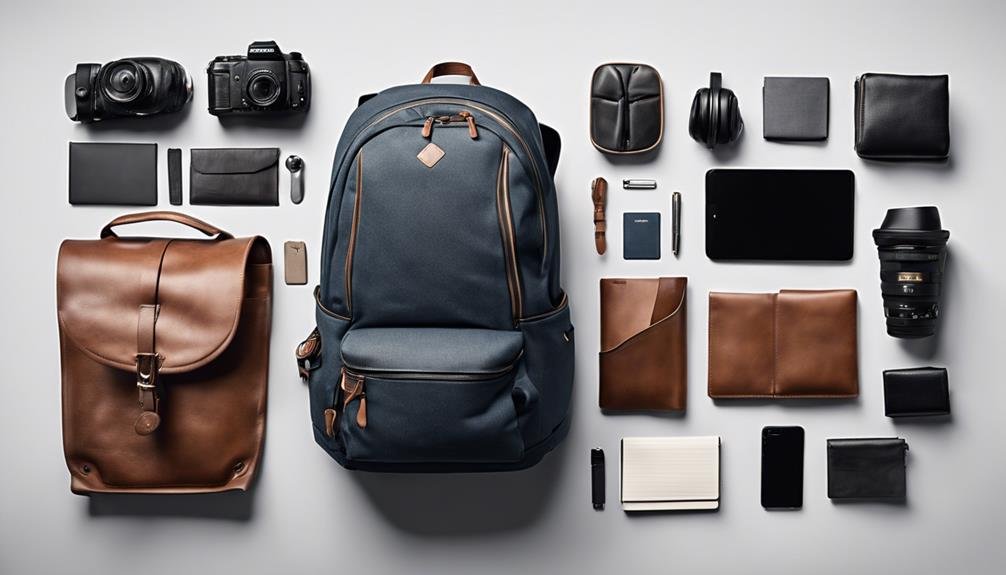
Securing your valuables in a hidden anti-theft pocket keeps essential items like passports and money safe while you travel. When packing your bag, it’s important to balance accessibility with security, ensuring you can quickly reach your important travel documents without compromising their safety. Here are some practical tips to keep your valuables secure yet accessible:
- Designate Specific Pockets: Utilize different compartments in your backpack for various items. Keep your ID, tickets, and travel insurance in an easily accessible pocket that you can reach without having to dig through your entire bag.
- Lockable Compartments: Use a lockable compartment or pouch for valuable electronics such as cameras or laptops. This adds an extra layer of security and helps to deter theft.
- Portable Safe: Consider a portable safe or security pouch for high-value items. This is especially useful if you carry jewelry or large amounts of cash.
- RFID Protection: Protect your credit cards and passports with RFID-blocking sleeves or wallets. This prevents electronic pickpocketing and keeps your personal information secure from unauthorized scans.
Manage Your Backpack’s Weight
While you keep your valuables safe and accessible, managing your backpack’s weight is equally important to guarantee comfort during your journey. Proper weight distribution is vital when packing your bag. Start by placing heavier items close to your body and around the vertical middle of the pack.
This placement ensures balance and reduces the strain on your back. For an efficient travel experience, wear bulky items like jackets or boots on the plane. This strategy not only keeps you warm but also lightens your load. Above these heavier items, organize your mid-weight clothes, like jeans and sweaters, to maintain stability.
Lightweight items such as T-shirts or scarves should go at the bottom. Remember to pack your toiletries in an easily accessible location. This setup prevents you from having to dig through your backpack, keeping everything organized and within easy reach.
Remember, the goal is to streamline your packing process and enhance your travel experience. By following these travel tips, you’ll ensure your backpack isn’t a burden but a well-organized, balanced travel companion.
Prepare for Security Checks
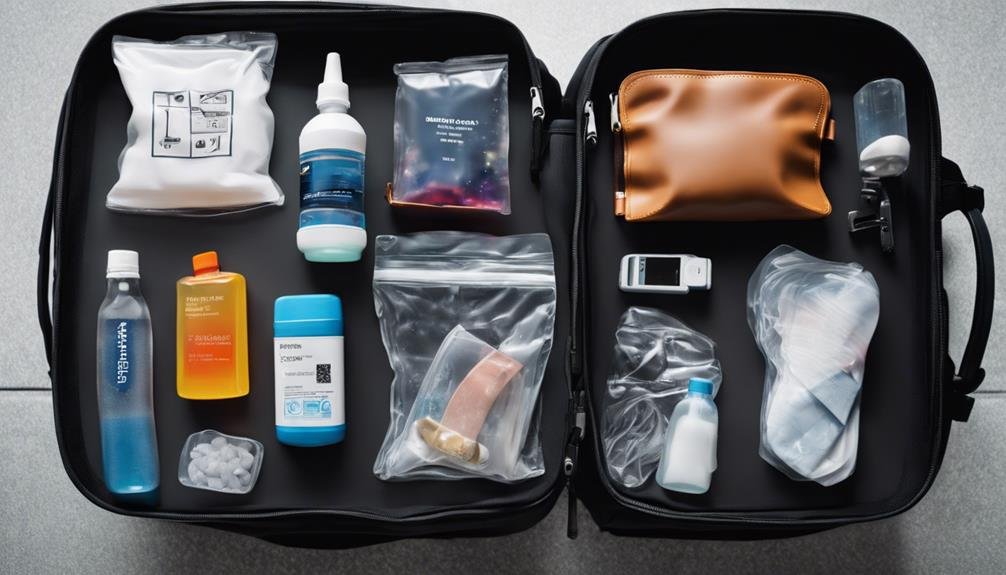
Pack your liquids in a clear, quart-sized plastic bag to breeze through airport security. This single step complies with TSA guidelines and streamlines your screening process. Here are a few more tips to prepare:
- Organize Electronics: Use your electronic devices’ interior pockets or packing cubes with mesh pockets. Guarantee your laptop is removable; this makes it easier to take it out quickly without rummaging through your bag.
- Dress Smartly: Wear slip-on shoes to avoid delays when removing them at security checkpoints. Slip-on shoes are comfortable, efficient, and save you time and hassle.
- Accessible Essentials: Keep any necessary documents, clear plastic bags of liquids, and electronic devices in easy-to-reach places. If your backpack has a designated laptop compartment or removable laptop sleeve, use it to simplify the screening process.
- Avoid Prohibited Items: Double-check that you haven’t packed any sharp objects in your carry-on. Items like scissors or large knives should go in checked luggage to avoid security confiscations.
Protect Fragile Items
After preparing for security checks, protecting any fragile items you plan to bring on your flight is equally important. When packing for airport travel, choosing the right type of bag is vital. A soft duffel or rigid suitcase can offer sturdy protection for your delicate items, shielding them from the bumps and jostles of transit.
For an added layer of safety, consider using a cardboard box inside your backpack. This can provide a snug fit and extra padding, guaranteeing your fragile items remain intact. Packing cubes are another excellent option to organize and protect smaller, delicate items. They help to keep everything compact and prevent shifting during movement.
If you carry particularly breakable items, keeping them as carry-on luggage is wise. You can ensure they’re handled with care throughout your journey. Lastly, if you’ve packed any food, ensure it’s secured in durable containers and tucked safely among softer items to avoid damage. Remember, a little foresight goes a long way in keeping your fragile belongings safe and sound while traveling by air.
Adjust for Comfort and Mobility
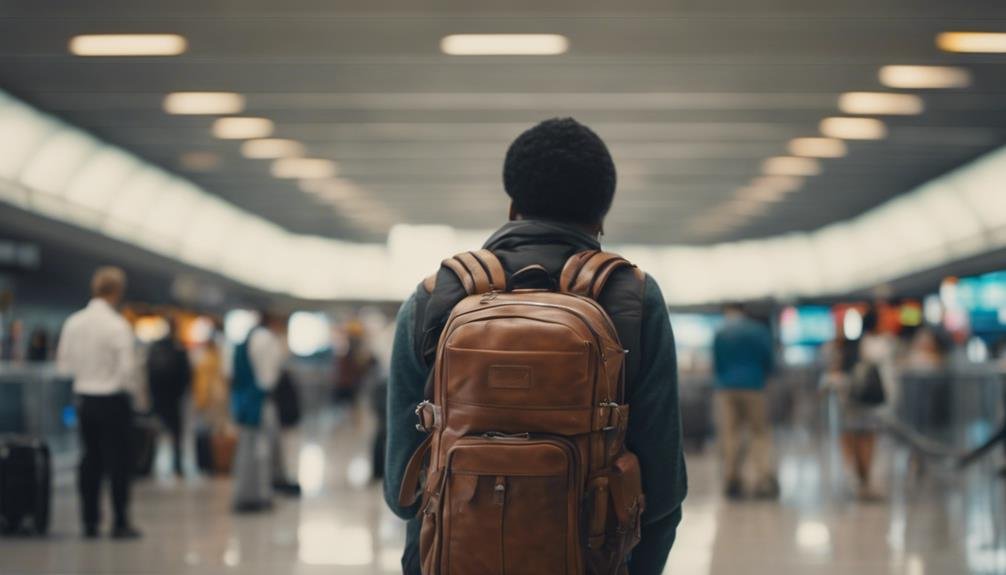
Properly adjusting your backpack can greatly enhance your comfort and mobility during travel. Here’s how to make sure your pack is comfortable to carry and complies with maximum carry-on dimensions:
- Adjust Shoulder Straps: Start by adjusting the shoulder straps to be snug but not tight. This helps keep your pack stable and distributes the weight evenly. Remember, good weight distribution is key to reducing fatigue.
- Utilize the Hip Belt: Fasten the hip belt to help shift some load from your shoulders to your hips. This is particularly useful if you carry heavier loads, as it helps maintain your center of gravity and improves overall balance.
- Tighten Load Lifters: These are located near the top of your shoulder straps and should be tightened so the backpack sits high on your back. This positioning helps keep the weight closer to your body, enhancing stability and making the pack easier to manage.
- Check Adjustment Regularly: Your pack’s fit can change as you move. Make small adjustments throughout your journey to maintain peak comfort and mobility. This is especially important if you’ve packed using packing cubes, which can shift slightly during transit.
Conclusion
To guarantee a smooth airline travel experience, choose a durable backpack with easy-access compartments and padded straps. Use packing cubes to maximize space and organize your items within airline size limits. Balance the weight and make sure valuables are secure yet easily reachable.
Be ready for security checks by packing essentials where you can quickly access them. Protect fragile items carefully and adjust your backpack for comfort and mobility. Follow these tips to travel with ease and efficiency.
Discover More Articles:
Top Attractions in New York City: A Must-See List for 2024
Why Hayden Valley Yellowstone is a Must-Visit for Nature Lovers
Denver Botanic Gardens: A Must-Visit Oasis in the Heart of the City
